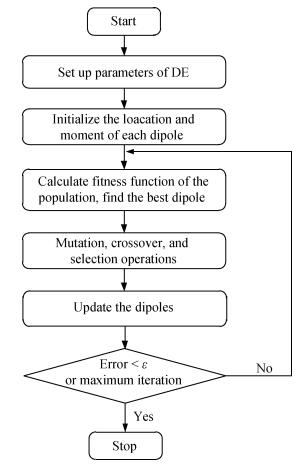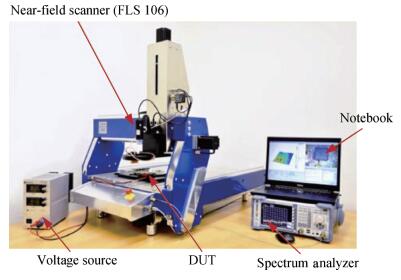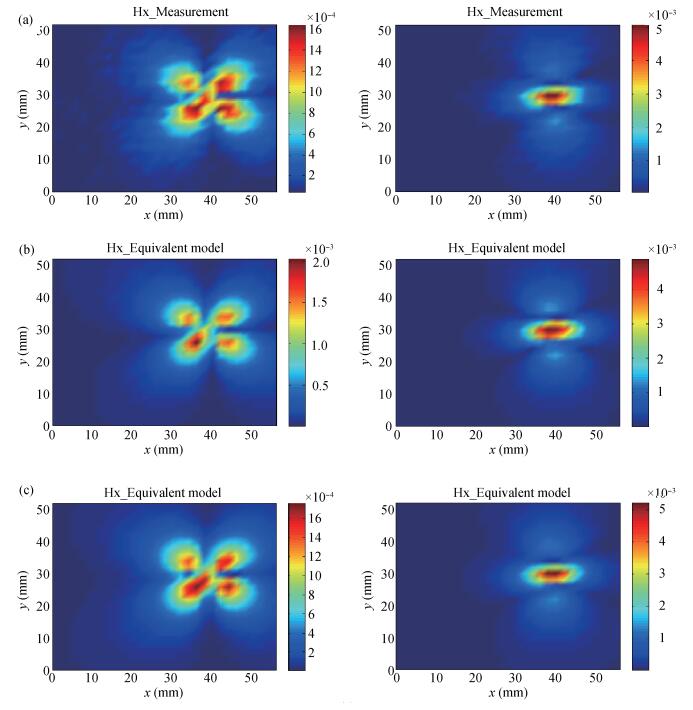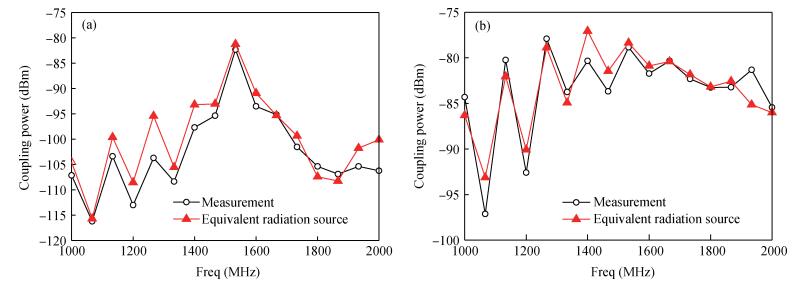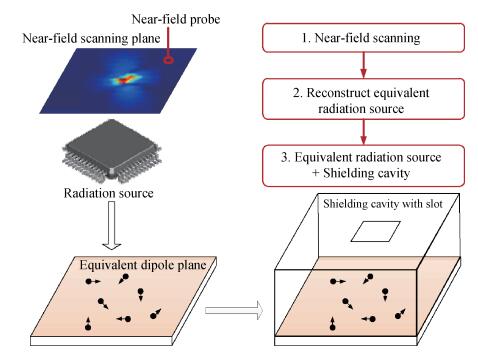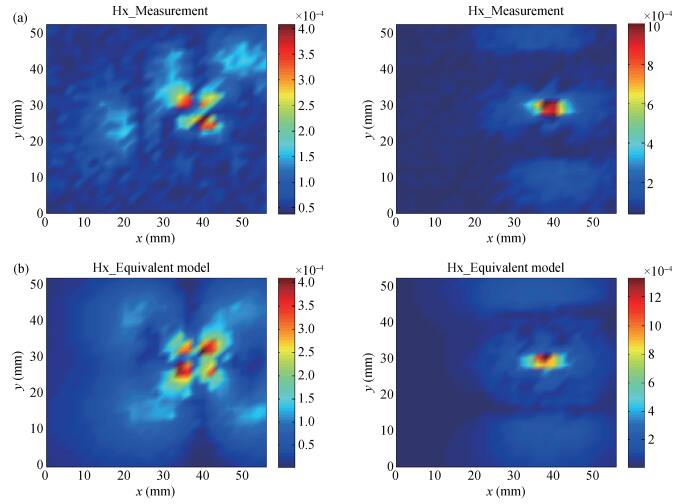| Citation: |
Jun Li, Xingchang Wei, Yufei Shu. Equivalent radiation source of 3D package for electromagnetic characteristics analysis[J]. Journal of Semiconductors, 2017, 38(10): 105010. doi: 10.1088/1674-4926/38/10/105010
****
J Li, X C Wei, Y F Shu. Equivalent radiation source of 3D package for electromagnetic characteristics analysis[J]. J. Semicond., 2017, 38(10): 105010. doi: 10.1088/1674-4926/38/10/105010.
|
Equivalent radiation source of 3D package for electromagnetic characteristics analysis
DOI: 10.1088/1674-4926/38/10/105010
More Information
-
Abstract
An equivalent radiation source method is proposed to characterize electromagnetic emission and interference of complex three dimensional integrated circuits (IC) in this paper. The method utilizes amplitude-only near-field scanning data to reconstruct an equivalent magnetic dipole array, and the differential evolution optimization algorithm is proposed to extract the locations, orientation and moments of those dipoles. By importing the equivalent dipoles model into a 3D full-wave simulator together with the victim circuit model, the electromagnetic interference issues in mixed RF/digital systems can be well predicted. A commercial IC is used to validate the accuracy and efficiency of this proposed method. The coupled power at the victim antenna port calculated by the equivalent radiation source is compared with the measured data. Good consistency is obtained which confirms the validity and efficiency of the method. -
References
[1] Fang R N, Sun X, Miao M. Novel through-silicon vias for enhanced signal integrity in 3D integrated systems. J Semicond, 2016, 37(10):106002 doi: 10.1088/1674-4926/37/10/106002[2] Ren X L, Pang C, Qin Z. Design, analysis and test of highfrequency interconnections in 2.5D package with silicon interposer. J Semicond, 2016, 37(4):045003 doi: 10.1088/1674-4926/37/4/045003[3] Yao Q, Ye Z C, Yu W J. An efficient method for comprehensive modeling and parasitic extraction of cylindrical through-silicon vias in 3D ICs. J Semicond, 2015, 36(8):085006 doi: 10.1088/1674-4926/36/8/085006[4] Yolanda V G, Christian A, Anne L, et al. Modeling magnetic radiations of electronic circuits using near-field scanning method. IEEE Trans Electromagn Compatib, 2007, 49(2):391 doi: 10.1109/TEMC.2006.890168[5] Iserniaa T, Leoneb G, Pierric R. Phaseless near field techniques:formulation of the problem and field properties. J Electromagn Waves Appl, 1994, 8(7):871 doi: 10.1163/156939394X00632[6] Lopez P F, Ramanujan A, Gilabert Y V, et al. A radiated emission model compatible to a commercial electromagnetic simulation tool. 20th International Zurich Symposium on Electromagnetic Compatibility, 2009:369 http://www.jpier.org/PIERB/pier.php?paper=10121605[7] Pan J N, Li G H, Zhou Y, et al. Measurement validation of the dipole-moment model for IC radiated emissions. IEEE International Symposium on Electromagnetic Compatibility (EMC), 2013:666[8] Weng H X, Beetner D G, DuBroff R E. Prediction of radiated emissions using near-field measurements. IEEE Trans Electromagn Compatib, 2011, 53(4):891 doi: 10.1109/TEMC.2011.2141998[9] Yu Z W, Mix J A, Sajuyigbe S, et al. An improved dipole-moment model based on near-field scanning for characterizing near-field coupling and far-field radiation from an IC. IEEE Trans Electromagn Compatib, 2013, 55(1):97 doi: 10.1109/TEMC.2012.2207726[10] Pan J N, Li L, Gao X, et al. Application of dipole-moment model in EMI estimation. Joint IEEE International Symposium on Electromagnetic Compatibility (EMC) and EMC Europe, 2015:350 http://ieeexplore.ieee.org/document/6670495/[11] Xiang F P, Li E P, Wei X C. A particle swarm optimizationbased approach for predicting maximum radiated emission from PCBs with dominant radiators. IEEE Trans Electromagn Compatib, 2015, 57(5):1197 doi: 10.1109/TEMC.2015.2414174[12] Regue J R, Ribo M, Garrell J M. A genetic algorithm based method for source identification and far-field radiated emissions prediction from near-field measurements for PCB characterization. IEEE Trans Electromagn Compatib, 2001, 43(4):520 doi: 10.1109/15.974631[13] Xing T, Thomas D W P, Nothofer A. A genetic algorithm based method for modeling equivalent emission sources of printed circuits from near-field measurements. 2010 Asia-Pacific International Symposium on Electromagnetic Compatibility, 2010:293 https://www.nottingham.ac.uk/Engineering/People/angela.nothofer[14] Constantine A. Balanis. Antenna theory: analysis and design. America: John Wiley & Sons, 2012[15] Storn R, Price K. Differential evolution-a simple and efficient heuristic for global optimization over continuous spaces. J Glob Optim, 1997:341 http://www.academia.edu/3796808/Differential_Evolution_a_simple_and_efficient_heuristic_for_global_optimization_over_continuous_spaces[16] International Electrotechnical Commission. Integrated circuitsmeasurement of electromagnetic emissions, 150 kHz to 1 GHz-Part 3: measurement of radiated emissions, surface scan method, IEC 61967-3, 2005 -
Proportional views





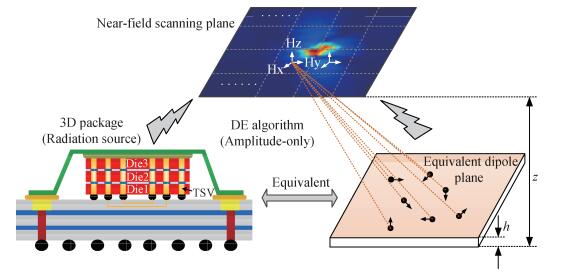
 DownLoad:
DownLoad:
